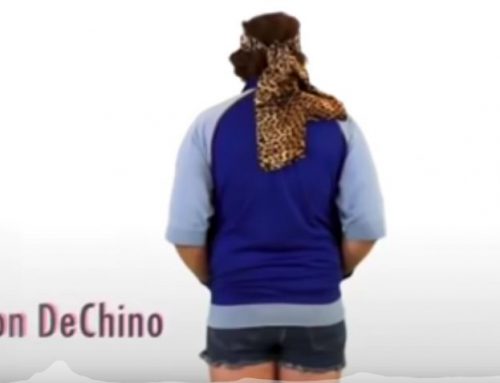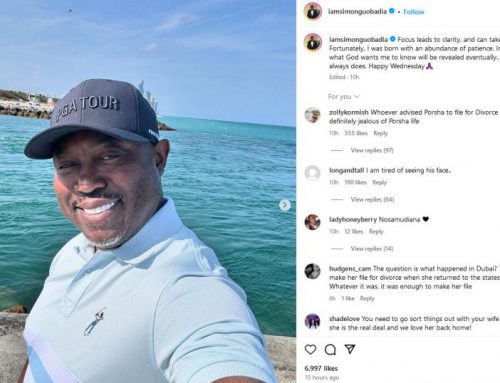Source: http://www.crazydaysandnights.net
It Was Murder
Halloween seems like a fitting day to talk about this Hollywood murder.
It didn’t actually happen in Hollywood.
It happened a long way from Hollywood in fact, on a movie set.
This long time A list dual threat actor was probably B+ list at the time.
His offspring probably reached the same level of fame at their peak. The offspring has shinier hardware nominations for their efforts.
Anyway, our actor told the person in charge on the set that he knew not only about the financial exploitation of all the young children, tweens and teens on the set, but also the sexual exploitation.
This was back in the day in a faraway place before there were smart phone or social media.
Do you know how much child porn was filmed during this movie?
Hundreds and hundreds of hours which is still floating through Hollywood.
They used the same cameras from the filming of the movie.
Our actor wanted to put a stop to it and was killed for his efforts.
Some of the exploitation was revealed in an investigation, but that was just the tip.
It was enough to get people to move on to other things.
Vic Morrow
Daughter: Jennifer Jason Leigh
Twilight Zone: The Movie
Twilight Zone: The Movie and the disaster that changed how films are made
…
The Twilight Zone is something that audiences and creators will always feverishly return to. Yet it is also The Twilight Zone where one of Hollywood’s most shocking tragedies occurred, an accident of hubris, poor planning, and rule breaking that led to the deaths of an industry legend and two young children. It also reshaped how films are made to this day.This year marks the 35th anniversary of Twilight Zone: The Movie. Produced by Steven Spielberg, who also directed a segment, it united some of the era’s hottest talents under the familiar banner of spooky anthology storytelling. Joe Dante, George Miller, and John Landis joined Spielberg on the project, representing the new establishment of Hollywood: the blockbuster generation. Spielberg had reinvented the summer movie with Jaws and Raiders of the Lost Ark; Dante made a splash on the horror scene with The Howling; the first two Mad Max films had made Miller a daring new star of the action world; and Landis had directed three classics before he turned 35 — Animal House, The Blues Brothers and An American Werewolf in London. These were four men whose work followed proudly in the footsteps of Serling and his team, pushing the boundaries of genre fiction and legitimizing high-concept storytelling as a favorite of mainstream audiences. It only made sense for them to dive into The Twilight Zone.
Three of the directors remade classic episodes of the show. Spielberg took on Kick the Can, while Dante adapted It’s a Good Life and Miller revived arguably the most popular story from the series, Nightmare at 20,000 Feet. Only Landis would direct an original segment, titled Time Out. Partly inspired by episodes like What You Need and A Nice Place to Visit, the segment followed a bigoted man who finds himself thrown through history and experiencing the worst atrocities through the eyes of the victims. For example, he ends up in the rural South during the reign of the Klu Klux Klan, who see him as a black man and try to lynch him. It’s a classic Twilight Zone set-up, a socially conscious genre concept that forces wicked people to experience that which they inflict on the earth. Vic Morrow, a popular film and television actor, signed on to play the lead role. while Richard Matheson, Melissa Matheson (writer of E.T.) and George Clayton Johnson (co-author of Logan’s Run) served as writers.
The segment ends with the lead character being captured by Nazi officers and flung into a railroad car with Jewish prisoners. This is because filming the original ending, wherein the man redeems himself by rescuing two Vietnamese children during a raid on their village, resulted in one of the industry’s most shocking accidents.
Landis’s segment in the film was intended to be a big special effects display, a noted contrast with the lo-fi nature of the series. This was The Twilight Zone for a generation of excess. Shooting was a mess from the get-go. Landis violated child labor laws to hire the two young children who would be rescued by Morrow. Seven-year-old Myca Dinh Le and 6-year-old Renee Shin-Yi Chen were paid under the table and hired without the appropriate permits because California’s laws on the matter would not allow kids to work at night. Landis could have put in an application for a special waiver but chose not to because he didn’t think he’d get it anyway. The scene included massive amounts of water and explosives, so such a request would most likely have been denied outright. The children’s parents were also asked by associate producer George Folsey Jr. not to tell any of the on-set firefighters that their kids would be part of the scene. The set fire safety officer was also kept in the dark about this.
The scene involved a helicopter bombing the village Morrow was to save the children from. At the controls of this was Dorcey Wingo, a real-life Vietnam War veteran, but one with no experience working in film or stunt work. During rehearsals, the explosions had buffeted the helicopter and terrified Wingo, but he never told anyone of his worries. It was assumed that a man who had experienced war first-hand would know what to do, forgetting the obvious differences between real war and constructed situations. Landis also had a reputation for being a controlling director, one who frequently screamed, swore, and demanded more than was reasonable from his cast and crew.
Filming took place at Indian Dunes, a ranch that was popular for film and television productions due to its size, distance from the major cities, and varied landscapes. It made for the perfect stand-in for Vietnam, but it was also big enough to allow for larger explosion effects, which pleased Landis. Shooting of the scene started in the early hours of July 23, 1982. Morrow was directed to pick up the two children, one under each arm, and wade across the river set while being pursued by American soldiers in the helicopter flown by Wingo. The helicopter was stationed 25 feet from the ground, hovering near a large mortar effect. Explosions were detonated, but it was too much. Production manager Dan Allingham would later testify that he told Wingo, “That’s too much. Let’s get out of here” at this moment, but Landis, over the radio, shouted, “Get lower! Lower! Get over!” Wingo lost control of the helicopter as its rotor failed. Already at a low height, it crashed into the water. Morrow had dropped Chen and at that moment was reaching out to grab her. The helicopter fell on top of them. Morrow and Le were decapitated by the rotor blades. Chen was crushed to death.
Following the tragedy, civil and criminal suits were filed against the film-makers. Landis, Wingo, production manager Dan Allingham, Folsey, and explosives specialist Paul Stewart were tried on charges of manslaughter. The trial was a major media event and one that remains controversial to this day. It took three years to get everyone in a courthouse. Deputy District Attorney Lea Purwin D’Agostino put on a show befitting of a Hollywood drama. She hissed “murderer” at Landis and dramatically offered him tissues when he began to cry on the stand. She was pitted against seven defense attorneys, all male, including a former Watergate prosecutor. One of them tried to have a mistrial declared on the grounds of D’Agostino’s fervent prosecution. It didn’t work, but D’Agostino didn’t get a conviction either. Despite the defendants admitting that they broke child labor laws by having the kids on set in the first place, their defense that the accident was unavoidable won the jury over, and all men were acquitted. – Source
Read more on these Tags: Jennifer Jason Leigh, Vic Morrow










This is scary!!